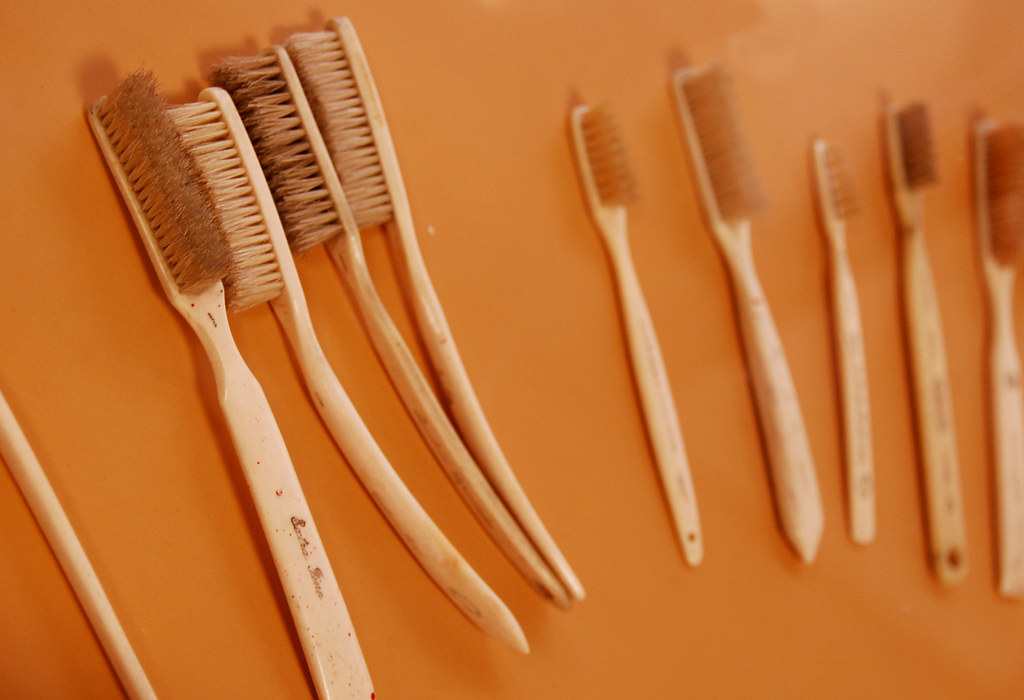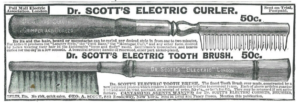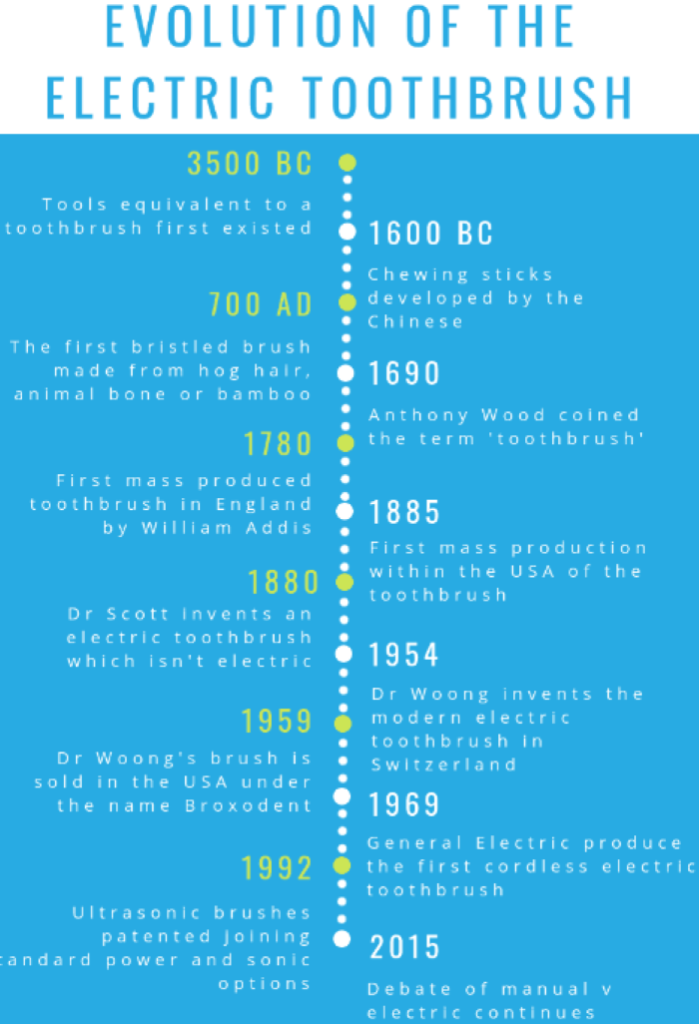Original Toothbrushes were Sticks
The first toothbrushes were invented 5000 years ago and were “chew” sticks made from aromatic tree twigs to freshen breath. Ancient Babylonians and Egyptians created the first ‘toothbrushes’ from frayed twigs between 3500-3000 B.C. Evidence comes from the ancient Egyptians who meticulously preserved items in these tombs.
Toothbrushes invented in China
Following the pattern of old chew sticks, toothbrushes were made out of bamboo and fitted with boar bristles. Once introduced to Europe, toothbrushes used horse hair or custom badger hair. Later bristled brushes were made out of bone, ivory, or other woods. The modern toothbrush was invented between the 1920’s and 30’s.
First Mass-Produced Prototype Invented in Prison
William Addis, in prison for inciting a riot in 1770 England, observed how fellow inmates were using soot or salt to clean their teeth. Looking for a better solution, he secretly hid a bone, drilled holes and stuffed/glued bristles in place. Once released, Addis refined his prototype and became the first manufacturer and seller of commercial toothbrushes, which became very popular in the late 1920’s.
Evolution of Toothbrushes
Some quick facts:
The 1st 3-Row Bristle Toothbrush was invented around 1844. Before that time, toothbrushes only had a single row of bristles with 3 rows of bristles becoming the norm as they covered more surface area and became more effective than the single row used before.
The Nylon Toothbrush was invented in 1938. Nylon toothbrushes replaced boar bristles as they were more hygienic, comfortable and effective. The switch from natural to artificial bristles was popularized by WWII soldiers, returning from the war. Soldiers, supplied with toothbrushes, were required by the military to brush their teeth. With the concept of toothbrushing becoming the norm, toothbrush sales skyrocketed in the 40s.
The First Electric Toothbrush Was Not Electric
Minimize Toothbrush Bacteria- Store your Toothbrush in the Open Air
Covering a toothbrush after cleaning creates a moist environment around your brush bristles, causing bacteria to grow more quickly than an uncovered toothbrush. After brushing your teeth, wash your toothbrush bristles as they are still coated in bacteria and plaque, which needs to be washed off. However, no matter how well you rinse your toothbrush, some bacteria will still remain. Open-air allows for more rapid drying and less bacterial growth and can help keep your toothbrush clean and usable for longer. Store your toothbrush away from other toothbrushes to avoid cross-contamination, and allow ample airflow for quick drying and more sanitary storage.
Throw Away Toothbrushes
With over 1 billion toothbrushes being thrown away every year in just the US alone, we are looking for alternatives. Bamboo toothbrushes are making a resurgence given that plastic toothbrushes and nylon bristles are not recyclable.
Plastics, harmful to the planet, can cause harm to your health. These plastics contain harmful and toxic chemicals like BPA, an estrogen, potentially harmful to human health. BPA acts as a hormone disruptor linked to certain cancers, infertility, metabolic conditions, and other life-altering conditions.
Plastics containing BPA often release low levels of the toxin, but with continued use, these levels can easily rise. Exposure to heat and regular scratching, friction, or surface disruption increase the rate of BPA release in some plastic products, particularly harmful to the immunocompromised, elderly, and small children.
Most bamboo toothbrushes are recyclable, biodegradable, and reusable, and usually come in plastic-free eco-friendly packaging. Designed to last as long and effectively as traditional plastic toothbrushes, these biodegradable materials will not hurt the planet.




